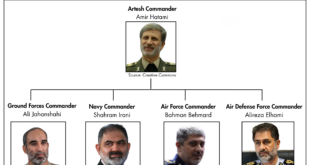 TEHRAN (FNA)- Is Seyed Mohammad Khatami going to take part in the upcoming presidential elections? This is the question in Iran today.
TEHRAN (FNA)- Is Seyed Mohammad Khatami going to take part in the upcoming presidential elections? This is the question in Iran today.
Khatami has so far remained quiet on whether he’ll seek a comeback in next June’s presidential election as a powerful counterpoint to Ahmadinejad, whose blend of Western defiance and strong nationalism stands in sharp relief to Khatami’s tempered tones and appeals for global dialogue.
The shape of the race is far from clear, with only one minor candidate officially in the hunt. Yet a heavyweight like Khatami could be a booster shot to Iran’s dispirited reform movement.
“Khatami can’t avoid running. Iran is at a critical point,” said former Vice President Mohammad Ali Abtahi, one of Khatami’s close advisers. “It is a historic situation. He has to run even if he doesn’t want it personally.”
The subtext is clear: reformers sense Ahmadinejad is vulnerable and are desperate for a unifying figure.
No true political heir to Khatami emerged after his 1997-2005 tenure, the maximum because of a two-term limit. That means reformists are left looking backward to Khatami even though he left office widely discredited among his political base – angry at Khatami for not waging head-on battles against the opposition.
Many reformists were so disillusioned that they even shunned the elections that brought Ahmadinejad surprise victory, which was built around economic populism, Persian patriotism and a return to the values of the 1979 Islamic Revolution.
Khatami has been considered a long shot to return politics after turning his attentions in recent years to efforts at religious and cultural exchanges between nations.
Instead, Khatami was expected to throw his support behind another reform-minded candidate – perhaps parliament speaker Ali Larijani, who was Iran’s top nuclear negotiator from 2005-2007 but was dumped by Ahmadinejad.
Also uncertain is what role perennial power brokers such as Hashemi Rafsanjani – another former president – plan in the election. Rafsanjani, who lost to Ahmadinejad in the final election round in 2005, heads an all-clerical body empowered to appoint or dismiss the country’s supreme leader.
But calls have been steadily growing for Khatami to come out of political retirement.
This week offered Khatami a possible dress rehearsal: playing the role of statesman while hosting high-profile foreign leaders including former Italian Prime Minister Romano Prodi and Ireland’s former president, Mary Robinson.
The group first attended a two-day conference on religion in Tehran, which Khatami moderated, then flew with him late Tuesday to his birthplace, Yazd, in the central arid highlands about 420 miles (670 kilometers) from Tehran.
On Wednesday, the visitors toured gardens dotted with “windcatchers” – traditional Persian tower structures used for centuries to create natural ventilation in buildings.
Prodi urged Iran “to go toward an open society” and turn toward reforms as a way of repairing ties with the West.
He did not openly criticize Ahmadinejad, who has refused to give up Iran’s NPT right of uranium enrichment despite three rounds of UN sanctions. But his comments were clearly tailored to support the less-strident policies of Khatami and his allies.
“A bright future for Iran is linked to a … role that this country can play in world politics,” Prodi told The Associated Press, adding that he had a “good feeling” during Khatami’s presidency.
“There was cooperation from President Khatami,” Prodi said.
Robinson, however, was more openly critical of Ahmadinejad – particularly his misunderstood statements that Israel should be “wiped off the map.”
“I hope Iran will re-embark on democratic reforms in the future, a program pursued when Khatami was president,” said Robinson, wearing a white head scarf during the visit.
As the guests toured, children at a nearby school greeted Khatami with a song and the audience chanted: “Long live Khatami, our next president.” Khatami was dressed as usual in his elegant clerical robes and turban.
The European visitors did not meet with Ahmadinejad on their trip. Former UN chief Kofi Annan, also in town for the religious conference portion, did meet separately with Ahmadinejad.
On the plane to Yazd, the soft-spoken Khatami strolled through the aisle, chatting individually with the visitors, including France’s ex-premier Lionel Jospin and former Norwegian Prime Minister Kjell Magne Bondevik.
Last month in New York, Bondevik attended a dinner hosted by Ahmadinejad during the UN General Assembly.
The months ahead are critical for Ahmadinejad to try to rebuild his political base.
 Eurasia Press & News
Eurasia Press & News
